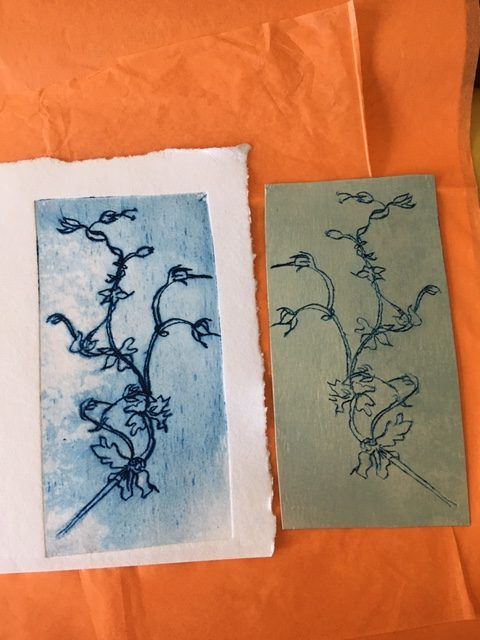Tetra Pak Printing
Tetra Pak printmaking is an innovative and eco-friendly printmaking technique that utilizes recycled Tetra Pak cartons as the printing plate. Tetra Pak cartons, commonly used for packaging liquids like milk and juice, have a multi-layered construction consisting of paper, aluminium, and plastic. Their unique surface properties make them a versatile and accessible alternative to traditional intaglio printmaking materials, such as metal or acrylic plates.
History of Tetra Pak Printmaking
The concept of Tetra Pak printmaking emerged as part of a broader movement in art to explore sustainable and low-cost materials. Although traditional printmaking techniques like etching, engraving, and linocut have long histories, contemporary artists have increasingly sought ways to reduce waste and experiment with unconventional materials. Tetra Pak printmaking gained popularity in the early 21st century, particularly among artists interested in recycling and environmental conservation.
Step-by-Step Tetra Pak Printing Process
Materials Needed
- Used Tetra Pak cartons (cleaned and flattened)
- Etching tools (e.g., drypoint needle or a sharp knife)
- Oil-based or water-based printing ink
- Brayer or Roller
- Printing paper
- A damp sponge or spray bottle (for dampening the paper)
- A spoon (for hand burnishing) or an etching press
Process
Prepare the Tetra Pak Plate:
- Clean and dry the Tetra Pak carton thoroughly. Remove any residue or leftover liquid.
- Cut the carton to the desired size and ensure it lays flat.
Create the Design:
- Use an etching tool to carve your design into the surface of the Tetra Pak. The printed lines will correspond to the incised areas.
- Experiment with different levels of pressure to achieve varied line depths and textures.
Ink the Plate:
- Apply a generous amount of ink to the surface of the plate using a brayer or a piece of cardboard.
- Spread the ink evenly over the plate, ensuring it fills the incised lines.
- Wipe away excess ink with a soft cloth or tissue, leaving ink only in the grooves of your design.
Prepare the Paper:
- Moisten the printing paper with a damp sponge or spray bottle. The paper should be damp but not overly wet.
- Blot the paper to remove excess water.
Print the Design:
- Place the inked Tetra Pak plate on a flat surface or an etching press bed.
- Position the dampened paper over the plate.
- If using a press, cover the paper with a protective blanket and run it through the press. If printing by hand, use a baren or the back of a spoon to apply even pressure over the entire surface of the paper.
Reveal the Print:
- Carefully peel the paper away from the plate to reveal your print.
- Set the print aside to dry.
Clean and Reuse the Plate:
- Clean the Tetra Pak plate with a soft cloth and water. The plate can often be reused multiple times.

Techniques in Tetra Pak Printmaking
- Drypoint: Carving directly into the Tetra Pak surface with a needle or sharp tool to create fine lines.
- Collagraph: Adding textures to the plate by gluing or layering materials onto its surface.
- Textural Experimentation: Utilizing the natural patterns on the Tetra Pak, such as the foil layer, for unique effects.
- Multi-color Printing: Applying different colors to specific areas of the plate or layering multiple prints.
- Chine-collé: Incorporating thin, colored papers during the printing process to add additional color and texture.
Why Use Tetra Pak Printmaking?
- Sustainability: Repurposes waste materials, aligning with eco-conscious art practices.
- Accessibility: Requires minimal investment in materials and equipment, making it ideal for beginners and educators.
- Versatility: Supports a wide range of artistic styles and techniques.
- Portability: Lightweight and easy to work with, allowing for mobile or outdoor printmaking sessions.
Tetra Pak printmaking is an inspiring and resourceful technique that combines creativity with environmental responsibility. Its simplicity and adaptability make it accessible to artists of all skill levels, while its potential for innovation continues to attract those seeking sustainable and unique methods of expression. Whether you are a seasoned printmaker or a curious beginner, this method offers an engaging way to transform discarded materials into stunning works of art.